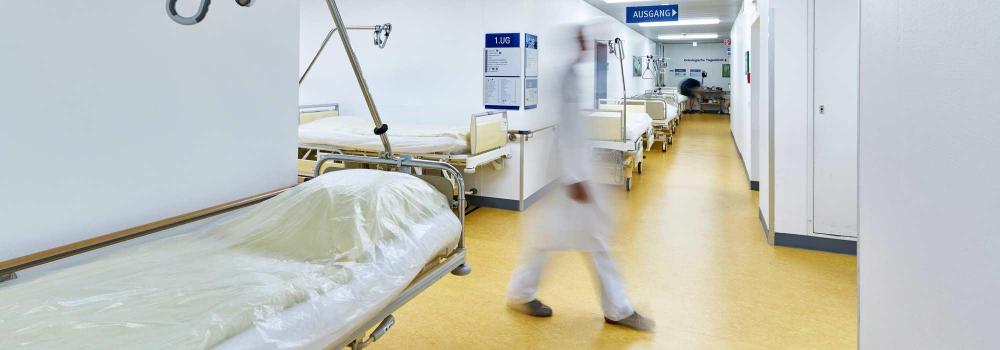While some care tasks are best left to the hands of a professional, there are still others within a healthcare setting that can be automated for an easier day. Explore how Primex OneVue® automated monitoring technology can help.
Healthcare Staffing Shortages on the Rise
Since the beginning of COVID-19, staffing shortages — nursing shortages especially — have been negatively impacting health systems. This may seem like a simple case of low supply and high demand, but the decreasing number of RNs is actually caused by a couple of factors.
For example, many nurses retired or were offered early retirement packages at the beginning of the pandemic; as many hospitals began canceling elective surgeries to focus on those suffering from the new coronavirus, they were no longer pulling in the same numbers of revenue, and could therefore no longer afford to pay the same number of nursing staff. Additionally, many nurses had to move to different departments during the height of COVID-19, often to help in intensive care units, which added more emotional and physical stress than their usual departments, leading to higher levels of burnout.
Over half of listed healthcare jobs remained unfulfilled in Q2 of 2021. Despite valiant efforts to attract new hires, including signing bonuses, there are still a reported 4.5 million job openings. These open spots are sorely felt, and little relief is in sight.
A review by Marymount University predicts that over 175,000 new nursing positions will open up each year for the next 15 years, as retirements continue to cause large numbers of vacancies. The article also introduced the idea that more errors are made when staffing levels are below the optimal numbers, citing problems like incorrect medication administration, bed sores, and even patients falling. Burnout and staff shortages can therefore lead to dangerous mistakes, as existing nurses are stretched far too thin.
Mitigating the Effects of Mounting Numbers of Open Positions
The statistics regarding the nursing shortage may look a bit grim, but the good news is that there are ways to combat burnout. For example, Primex OneVue automated monitoring solutions can help alleviate staff burden by:
- Eliminating the need for manual temperature logging — instead, OneVue Sense™ Temperature Monitoring can automatically and continuously track and record internal temperatures of vital storage units and send them to the OneVue web-based software
- Providing real-time alerts via text message, phone call, or email if conditions exceed a predetermined range, even when managers aren’t in the building, providing peace of mind by knowing that corrective action can be taken immediately
- Giving staff insight into all essential storage units through one source: the web-based OneVue software; if certain departments are understaffed, one person can have access to a unified view of every single monitored asset across a facility or campus, eliminating the need for multiple people to check on monitored areas throughout a health system
Through the use of this automated monitoring technology, collective staff time is freed up to be focused on other important tasks like personalized patient care. By getting rid of the burden of manually logging data, staff no longer need to focus on the details of a laborious task like recording facilitywide storage unit temperatures. Additionally, auditing events can pass without fuss or stress, as on-demand report generation on the OneVue software platform makes for easy compliance.
Additional Benefits From the OneVue Sense Portfolio
Automated monitoring solutions from the OneVue Sense portfolio extend past temperature sensors; there are a variety of other solutions that can contribute to collective staff peace of mind, including:
- Indoor Air Quality and Differential Pressure Monitoring helps track and manage temperature, humidity, and pressure gradients within operating rooms or other such critical care areas, ensuring a safe environment for patients and care providers alike
- Water Leak Monitoring, which, when the technology is placed in areas prone to leaks, is able to provide facility staff with a heads-up before potential costly water damage events like floods and burst pipes to avoid hefty repair bills or a need to relocate patients
- Contact Closure Monitoring helps preoccupied or already tired and stressed staff members know whether they or a colleague accidentally left a door open, whether it be to medication fridges, vaccine freezers, or lab sample storage units. Additionally, this technology can help staff keep an eye on patients who are prone to wandering, both in mental health facilities or elderly patient care situations with real-time alerts for open doors.
Ready to Use Automation to Relieve Staff Shortages?
There are no gaps with automated monitoring or its documentation process and results. Already overworked staff no longer have to worry about monitoring essential assets or environments, nor will they be at risk of any incorrect practice penalties from accrediting agencies for missed logs or gaps in data. Automated monitoring removes human error from the equation, as our solutions reliably and continuously monitor storage and environmental conditions and the OneVue software generates associated reports on demand.
Person-to-person patient care cannot be replicated by automation — however, monitoring tasks certainly can. Amid the current staffing shortages, automated monitoring from Primex can help alleviate stress and remove staff burden in any healthcare facility.
To learn more about our solutions and how they might help your healthcare system during ongoing staffing shortages, contact us today.
